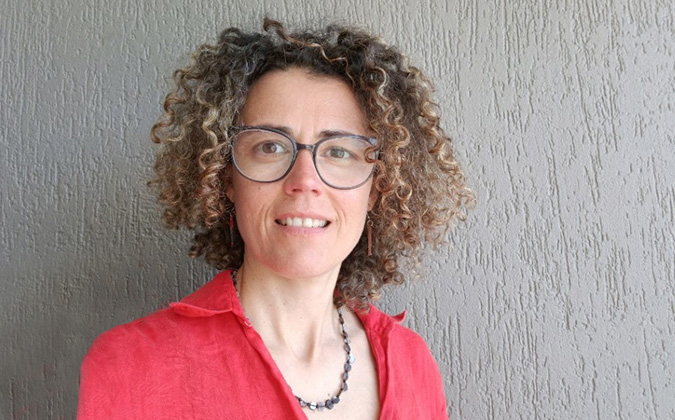
How to bring greater welfare knowledge to the world’s tilapia farmers
An interview with Sara Barrento, e-learning and aquaculture program manager for FAI Farms
Q: There have been major improvements in knowledge around welfare in Atlantic salmon aquaculture, but how much research is out there about tilapia?
SB: Recently there’s been quite a lot of research on tilapia welfare, which was not the case until a few years ago. Here at FAI, we’ve been collaborating with universities in Brazil, focusing not only on fish health but going beyond to look at environment, nutrition and behavior.
But while having the research and papers is important, the next step is actually implementing it at the farm level, alongside fish farmers.
Q: Welfare and health are closely connected, and this can have production impacts. But what level of knowledge do tilapia farmers tend to have about welfare issues?
SB: It depends on the country. In some countries, especially the industrialized ones, welfare is a well-known concept. In others with a larger proportion of small-holder farms with less intensification, the focus on welfare is more variable. Then, it also depends on the company you’re talking about — some are far more progressive than others on welfare — as well as what demands retailers that are buying fish are placing on their suppliers.
Q: So, what’s the key in bringing about change in places less familiar with the concept of fish welfare?
SB: From our perspective, visiting the farms and showing them how to do welfare assessments is so important. Having an e-learning component on top of that, which is in accessible language and available on a smartphone, hopefully gets more people in the industry familiar with the idea. Then, it’s important to be able to talk to farmers in their own language where possible. That’s why we have translated our online learning into Portuguese, Spanish, Thai and Chinese, as well as English.
Veterinarians are also crucial. Fish farmers are often informed by their veterinarians, and we were very happy that when we launched our tilapia welfare-indicators course, there was a veterinarian in Indonesia that immediately notified us that he is using the information from the course for training of his own staff.
Ultimately, if we get key individuals and institutions in tilapia-farming countries engaged, they can disseminate information in a way that’s adapted to the local context and challenges.
Q: From speaking to farmers, what have you learned about how to bring greater emphasis on welfare into their work?
SB: First of all, they need to have an easily applicable and predictable protocol. It needs to be very practical, and it needs to be smoothly integrated with daily husbandry.
For example, some farmers believe that simply feeding more is better, but this is not necessarily the case and can actually be counterproductive. If they see the benefits of using appropriate amounts of a quality feed, and doing it the right way, it can be easily integrated in the daily routines. It’s about creating the right habits.
Q: Where do you think the “low-hanging fruit” are to make relatively quick welfare improvements on tilapia farms?
SB: Certainly, feed is one area, because if you’re using less feed and you’re having the same growth, you can see immediate benefits there. Water quality is another. But also reporting on all welfare indicators is so important, and the reason why we created an app which hopefully makes this easier for farmers to integrate into their practice.
Q: Tell us more about the app.
SB: Within the four overarching areas of health, environment, behavior and nutrition there are a range of indicators which farmers can record, using a scoring system where 1 is good, 2 moderate and 3 poor.
For many of the metrics, in principle, a farm should already be measuring them as part of their management, so the app will just allow them to have this in a single system where they can see progress through time and broken down depending what type of system they have.
We expect the app to be a learning tool, too, so for example, you don’t have to know what a “good” or “bad” water pH value is; you will learn this over time.
Q: Is there a possibility that automated data, perhaps using sensors and artificial intelligence, could be incorporated into the app?
SB: There may be potential in the future for that, maybe using technologies that have been developed for the salmon industry, but we also think that part of this is a learning process. We still want people to know what good looks like, so that we do not solely depend on technology. A farm is a living system, with living organisms. It’s important for the farmer to understand that and be in better control.
Q: Where do knowledge gaps remain in improving tilapia welfare?
SB: I think that there’s still a lot to be done, especially in terms of behavior. That is probably the biggest challenge, because for health and environment, it is easier to experiment and gather data. It’s more difficult to get information about the behavior or even the mental state of fish on farms.
Of course, that doesn’t mean it will be impossible in the future. With better instruments, and cameras or other technologies, it may be that we can better analyze behavior and understand the mental states of fish. I also expect there to be many more developments in how we measure welfare at slaughter.
More generally, I think we will need to move from only looking at negative indicators, such as loss of scales or tail damage, to also measuring positive qualities in the lives of fish.
You can learn more about the tilapia welfare courses and app on the FAI Farms website.






